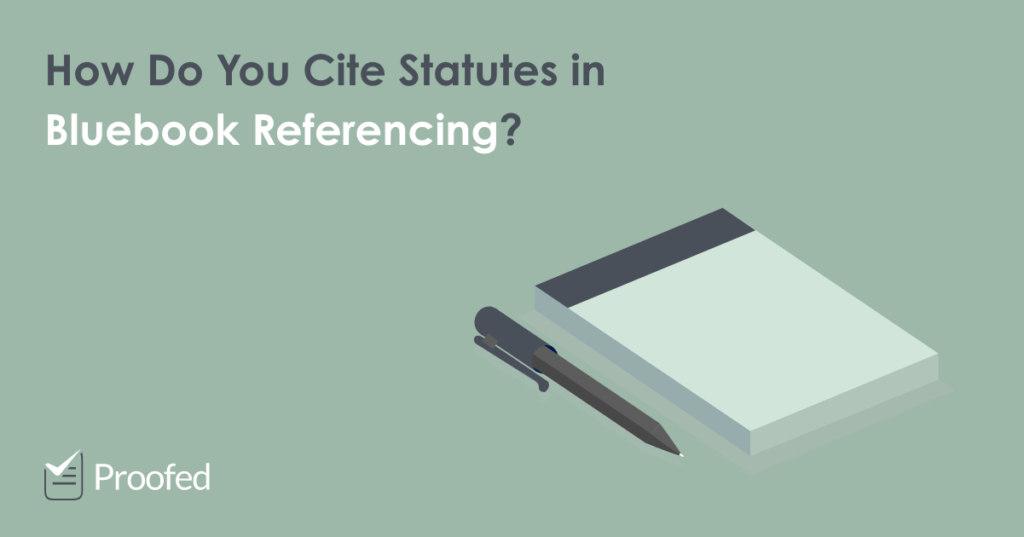The Bluebook sets out uniform conventions for referencing legal documents, so anyone studying US law will need to be familiar with the Bluebook system. We’ve previously looked at citing cases with this system, but today we’ll move on to using Bluebook referencing to cite federal statutes.
Citing Federal Statutes
Citing a federal statute typically involves referring to the United States Code (commonly abbreviated to ‘USC’). For instance, the basic format for a statutory citation is as follows:
|
Title |
Code Abbreviation |
Section (§) |
(Date) |
|
14 |
U.S.C. |
§37a |
(2012) |
You’ll then include citations either in the text (or in a footnote) immediately after the relevant passage, using an appropriate signal if necessary.
The rest of this post will examine each of these elements in more detail.
Find this useful?
Subscribe to our newsletter and get writing tips from our editors straight to your inbox.
Title Number
The ‘title’ of a federal statute is typically reduced to just the title number of the relevant section in the United States Code. In addition, you should provide the official name of the statute if:
- You’re citing the entire act as it appears in the United States Code.
- It is conventional to cite that particular statute in full.
- Providing the full name will aid identification of the material cited.
For example, you could cite the entirety of the Copyright Act of 1976 (title number 17 in the United States Code) as follows:
Copyright Act of 1976, 17 U.S.C. §§ 101-1332 (2012)
Code Abbreviation
The code abbreviation indicates the jurisdiction under which a statute has been implemented. State statutes require you to know the code of the state in question, but if you’re citing a federal statute the main code you’ll need is ‘USC’. (short for ‘United States Code’).
However, if you’re citing a statute that hasn’t yet been published in the USC, you can also cite the United States Code Annotated (USCA) or the United States Code Service (USCS).
Section Number
This is simply a number to show the section you’re citing, indicated using the section symbol (§) and the relevant number. If citing more than one section, use ‘§§’ and the complete range of sections being cited (e.g. §§ 101-1332).
Date of Code Edition
The bracketed date in a Bluebook citation refers to the year the copy of the code you’re using was published. You’ll therefore need to check your edition of the USC when citing a federal statute.
You should also include the publisher, alongside the year of publication, if citing either the USCA or USCS. As such, you would cite the LexisNexis-published version of a legal code like this:
14 U.S.C.S §37a (LexisNexis 2012)
UK Legal Referencing
While Bluebook referencing in widely used in the US, OSCOLA is the main legal citation style in the UK. Short for the Oxford Standard for Citation of Legal Authorities, most people use this system when writing about UK law.
And if you’d like anyone to check the referencing in a piece of legal writing, Proofed has experts in a range of legal citation styles available.
